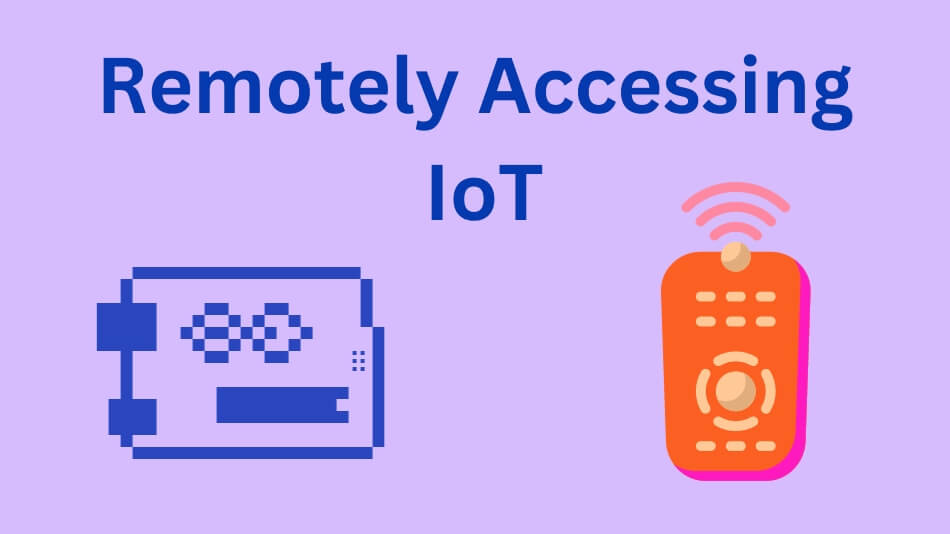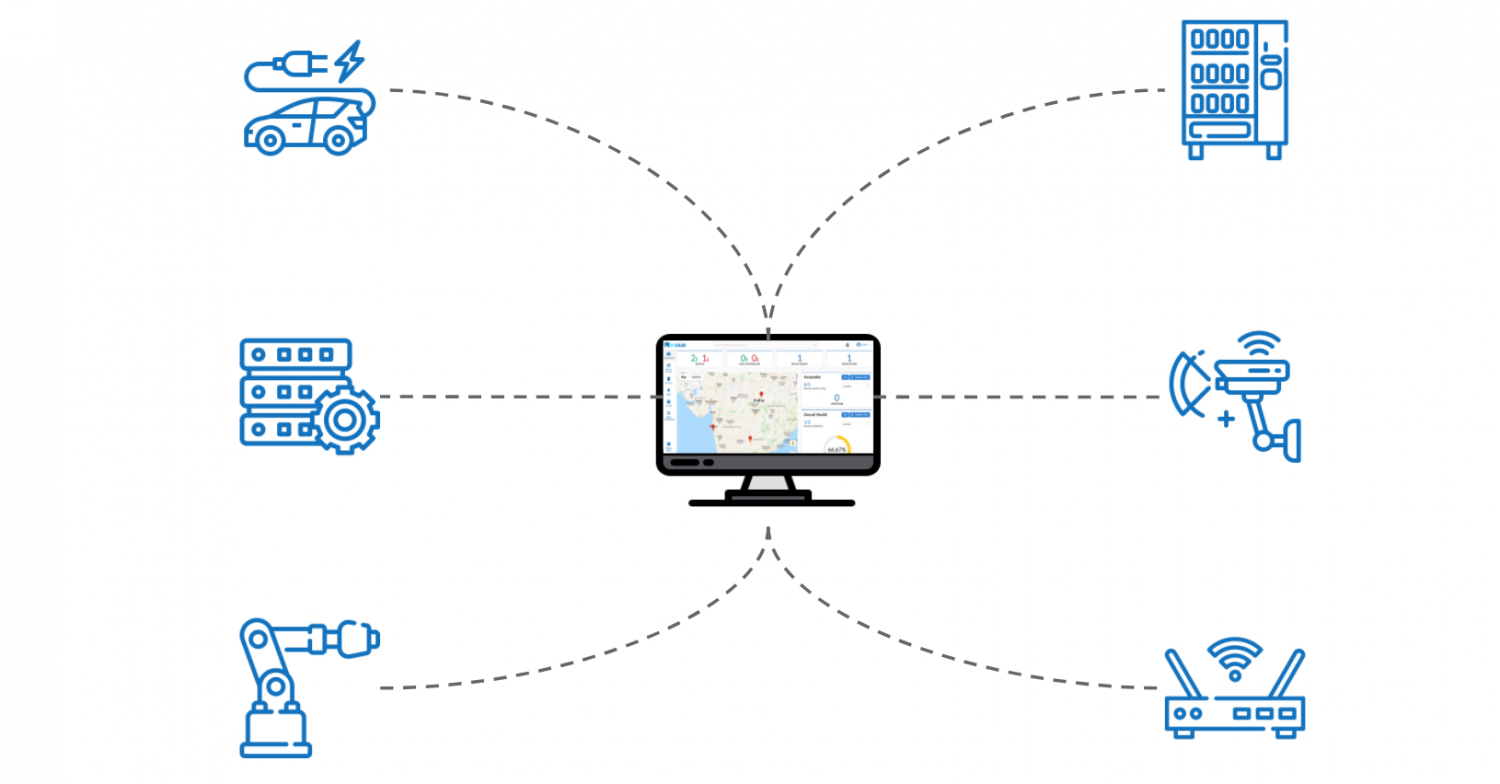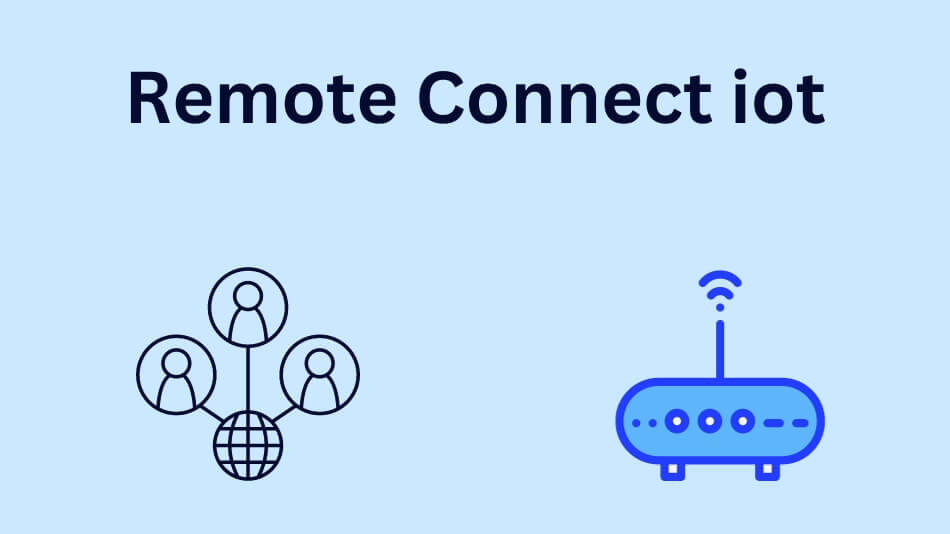In today's interconnected world, remotely connect IoT examples have become increasingly relevant as businesses and individuals seek innovative ways to manage devices and systems from afar. The Internet of Things (IoT) has revolutionized the way we interact with technology, offering unprecedented convenience and efficiency. By enabling devices to communicate and exchange data over the internet, IoT has paved the way for smarter homes, industries, and cities. This article will explore various examples of remotely connecting IoT devices and systems, providing you with actionable insights and practical applications.
As more devices become connected, the ability to remotely control and monitor them has become a necessity rather than a luxury. From smart home appliances to industrial machinery, the possibilities of remote IoT connections are virtually limitless. By understanding how these systems work and the examples available, you can leverage this technology to enhance productivity, reduce costs, and improve overall efficiency.
Whether you're a tech enthusiast, a business owner, or simply someone interested in the latest technological advancements, this article will provide valuable information on how to remotely connect IoT devices. We'll delve into the specifics of various use cases, discuss the benefits, and highlight the challenges associated with remote IoT connectivity. Let's dive in and explore the fascinating world of remotely connected IoT examples.
Read also:Zein Al Assad The Rising Star In The World Of Arts And Culture
Table of Contents
- Introduction to IoT and Remote Connectivity
- Examples of Remotely Connect IoT Devices
- Smart Home Systems: The Backbone of Remote IoT
- Industrial IoT Applications for Remote Operations
- IoT in Agriculture: Remote Farm Management
- Healthcare IoT: Remote Patient Monitoring
- Security Considerations for Remote IoT Connections
- Challenges and Solutions in Remote IoT Connectivity
- Future Trends in Remotely Connect IoT Examples
- Conclusion: Leveraging Remote IoT for Success
Introduction to IoT and Remote Connectivity
The Internet of Things (IoT) refers to the network of physical devices embedded with sensors, software, and connectivity, enabling them to exchange data and perform actions without human intervention. Remote connectivity plays a crucial role in IoT, allowing users to access and manage devices from anywhere in the world. This capability has transformed numerous industries, offering solutions that were previously unimaginable.
Understanding IoT Architecture
IoT architecture typically consists of three main components: devices, networks, and platforms. Devices are the physical objects equipped with sensors and actuators, while networks provide the communication infrastructure. Platforms serve as the central hub where data is processed and analyzed. By integrating these components, remote IoT connections can be established effectively.
Benefits of Remote IoT Connectivity
Some of the key benefits of remotely connecting IoT devices include:
- Increased Efficiency: Automating processes and monitoring systems remotely reduces the need for manual intervention.
- Cost Savings: By optimizing resource usage and minimizing downtime, businesses can save significant costs.
- Enhanced Flexibility: Users can manage their devices from anywhere, providing greater convenience and adaptability.
Examples of Remotely Connect IoT Devices
There are numerous examples of remotely connected IoT devices across various industries. These examples demonstrate the versatility and potential of IoT technology in solving real-world problems. Below are some of the most common applications:
Smart Lighting Systems
Smart lighting systems allow users to control lighting fixtures remotely via smartphone apps or web interfaces. These systems can adjust brightness, color, and scheduling based on user preferences, leading to energy savings and improved ambiance.
Remote Asset Tracking
In logistics and supply chain management, IoT devices are used to track the location and condition of assets in real-time. This ensures timely delivery and reduces the risk of loss or damage during transit.
Read also:Katie Hartung Eye A Comprehensive Look Into Her Career And Achievements
Smart Home Systems: The Backbone of Remote IoT
Smart home systems are among the most popular examples of remotely connected IoT devices. These systems integrate various household appliances, security cameras, and environmental controls into a single platform, allowing users to manage their homes effortlessly.
Key Features of Smart Home Systems
Some of the essential features of smart home systems include:
- Remote control of thermostats and HVAC systems.
- Automated lighting and appliance management.
- Real-time security monitoring and alerts.
Industrial IoT Applications for Remote Operations
In the industrial sector, IoT has enabled remote monitoring and control of machinery and processes. This has led to improved operational efficiency and reduced maintenance costs. Industries such as manufacturing, oil and gas, and utilities have embraced IoT to enhance productivity and safety.
Predictive Maintenance
Predictive maintenance is a key application of industrial IoT, where sensors monitor equipment performance and predict potential failures before they occur. This proactive approach minimizes downtime and extends the lifespan of machinery.
IoT in Agriculture: Remote Farm Management
Agriculture has also benefited significantly from IoT technology. Farmers can now remotely monitor soil moisture levels, weather conditions, and crop health using IoT devices. This data-driven approach helps optimize resource usage and increase crop yields.
Smart Irrigation Systems
Smart irrigation systems use IoT sensors to measure soil moisture and adjust watering schedules accordingly. This ensures optimal water usage and reduces waste, making farming more sustainable.
Healthcare IoT: Remote Patient Monitoring
In healthcare, IoT has revolutionized patient care through remote monitoring solutions. Wearable devices and smart health monitors enable healthcare providers to track patients' vital signs in real-time, allowing for early detection of health issues.
Telemedicine Applications
Telemedicine leverages IoT to connect patients with healthcare professionals remotely. This is particularly beneficial for individuals living in rural or underserved areas, providing them access to quality medical care.
Security Considerations for Remote IoT Connections
While remote IoT connections offer numerous advantages, they also pose security risks. Ensuring the safety and privacy of data transmitted between devices is critical. Below are some best practices for securing remote IoT systems:
Data Encryption
Encrypting data during transmission protects sensitive information from unauthorized access. Using strong encryption protocols such as AES or TLS is recommended.
Regular Software Updates
Keeping IoT devices and platforms up-to-date with the latest software patches helps mitigate vulnerabilities and protect against cyber threats.
Challenges and Solutions in Remote IoT Connectivity
Despite its many benefits, remote IoT connectivity faces several challenges, including connectivity issues, interoperability, and scalability. Addressing these challenges requires a combination of technological advancements and strategic planning.
Improving Network Infrastructure
Investing in robust network infrastructure, such as 5G and low-power wide-area networks (LPWAN), can enhance connectivity and reliability for remote IoT devices.
Future Trends in Remotely Connect IoT Examples
The future of remotely connected IoT devices looks promising, with emerging technologies such as artificial intelligence (AI) and edge computing set to play a significant role. These advancements will further enhance the capabilities of IoT systems, enabling more sophisticated applications and use cases.
AI-Driven IoT Solutions
AI-powered IoT solutions can analyze vast amounts of data in real-time, providing actionable insights and automating decision-making processes. This will lead to more intelligent and autonomous systems in the future.
Conclusion: Leveraging Remote IoT for Success
Remotely connect IoT examples have transformed the way we interact with technology, offering innovative solutions for businesses and individuals alike. By understanding the various applications, benefits, and challenges associated with remote IoT connectivity, you can harness its full potential to achieve your goals.
We encourage you to explore the possibilities of remote IoT connections further and implement them in your daily life or business operations. Don't forget to share your thoughts and experiences in the comments below or check out our other articles for more insightful content.
References:
- IEEE Spectrum - The Internet of Things: A Comprehensive Overview
- Gartner - Top Strategic Predictions for IoT Through 2025
- Forbes - The Future of IoT: Trends and Opportunities


